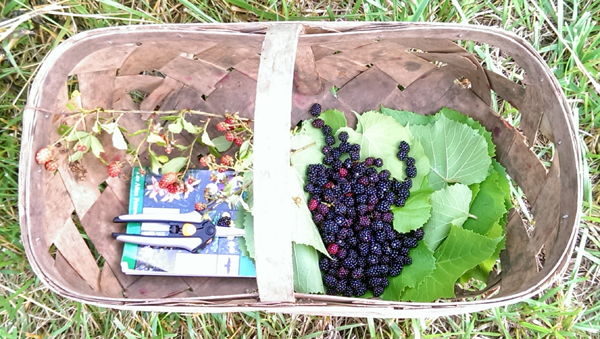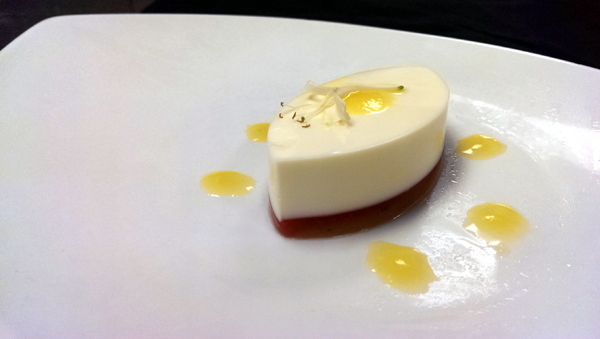"Oh wow, we got super lucky!" Our little group is no more than 50 feet from the residential street when Clark Barlowe darts off the dirt path, reaching for an overhanging branch. "I never thought we'd see these today. Mulberries."
Close on his heels, students and chef instructor Terra Ciotta from the Art Institute of Charlotte cluster under the tree to see, taste and pluck the small red berries as Barlowe explains that the pink unripe ones can also be pickled. This is just the beginning of an afternoon stroll with the chef/owner of Heirloom restaurant, who also happens to be a lifelong forager.
"I've been doing it since I was 8 or 9 years old," he says, recalling fishing trips with his grandfather, who would turn to the woods for food when the fish weren't biting. Barlowe is seventh generation North Carolinian, and the knowledge of edible plants seems to flow in his veins.
A natural teacher, he points out potential food sources as we go, explaining the varied ways to cook and preserve them. The students trailing along behind Barlowe are enrolled in the Contemporary Cuisine course at the Art Institute. In a week highlighting Rene Redzepi of top-ranked Noma in Copenhagen, Denmark, Ciotta asked Barlowe to introduce her students to the basics of foraging. Redzepi has raised foraged and fermented foods to the highest levels of international cuisine, and there seems no reason we can't enjoy the same approach here in Charlotte.
As both chefs point out, Charlotte sits at the intersection of several microclimates, from clay-bottom lowlands to loamy mountainous areas, all within a half-hour's drive. This day, we go no further than Barlowe's own neighborhood, a northwest Charlotte subdivision with neat modest homes and grassy lawns. As we enter the modest "nature trail" marked by typical suburban landscaping of crape myrtles and mondo grass, we have little idea we are walking into a food warehouse.
Just past the mulberry tree, Barlowe shows the students that entire honeysuckle blossoms can be eaten, including the unopened buds. Crossing a small stream, he points out an early-spring source of fiddlehead fern fronds. He stops to hand out wispy white portions of a clover flower, demonstrates how to use a birch stem to brush your teeth, and looks up how many different ways one can eat elderberry plants. In an open, mowed clearing, we all spread out, crouched down in an earnest search for tiny heart-shaped violet leaves.

The jackpot of the day, however, is blackberries. We see them all along our hour-long journey, and where ripe ones are scarce, we gather the leaves for tea and the red berries for pickling. Finally, as we're headed back to our cars, we come upon a small thicket loaded with juicy black nuggets, within hailing distance of a vinyl-sided one-car garage.
Once back in their kitchen at the Art Institute, the students use the foraged ingredients to complete their last meal of the quarter, from clover-flower and violet-pesto garnish on the soup, to a creamy honeysuckle panna cotta dessert. Much of the harvest is saved for later: Pickled mulberries, brined grape leaves and, last but certainly not least, candied blackberries will remain in storage awaiting the next inspired menu.
"I bet you didn't know you had food growing in your yard," Ciotta teases a student.

